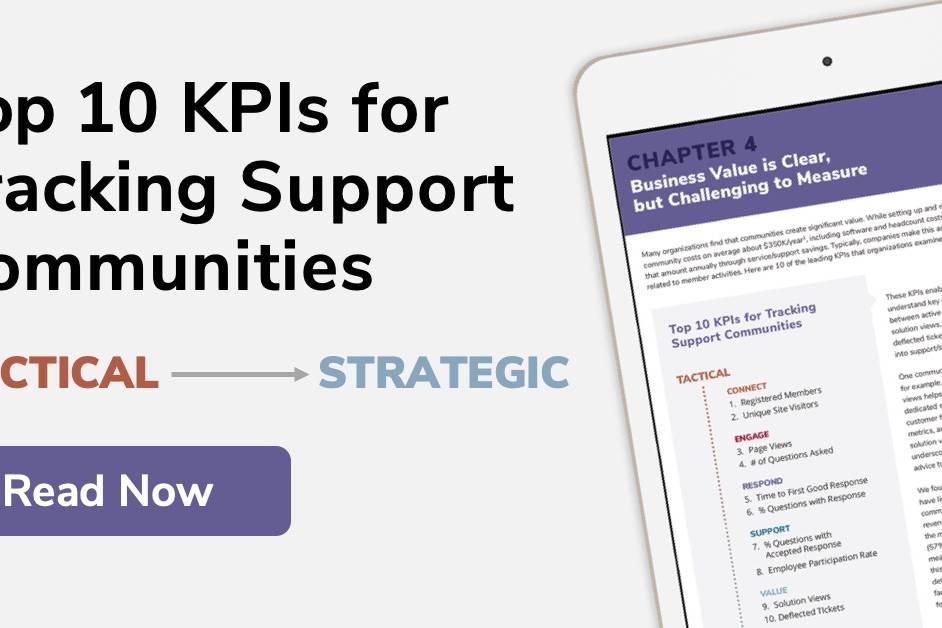 Failure. It’s not a word anyone likes. Yet it is common occurrence with innovation projects. When projects fail, there’s a natural inclination to avoid looking for the reasons why. This is especially true for online customer communities. A failure with customers (Ouch!) is far more painful than any internally-facing problem, because it touches the people and companies that are core to the organizations’ success.
Failure. It’s not a word anyone likes. Yet it is common occurrence with innovation projects. When projects fail, there’s a natural inclination to avoid looking for the reasons why. This is especially true for online customer communities. A failure with customers (Ouch!) is far more painful than any internally-facing problem, because it touches the people and companies that are core to the organizations’ success.
The usual reasons offered for online customer community failure include: the members weren’t ready for online discussions; the software wasn’t what we expected; the subject matter experts didn’t produce enough content; the customers were too “traditional.” These deflections don’t address the root cause of your community’s failure. It was the result of your firm’s organizational process, strategy and execution.
In 2012, Gartner predicted that by 2014 70 percent of proprietary communities would fail –a sizable group of investments generating little or no return for some of the world’s largest enterprises. At the same time, use of social channels continues to grow. A recent Forrester report (Understand Communication Channel Needs To Craft Your Customer Service Strategy, March 2013) states “Online communities and Twitter have seen increases in usage rates in the past three years. However, satisfaction remains low for these channels, as companies have not invested in best practices for managing interactions on these channels.”
Not all communities are doomed. For those who succeed, the returns are enormous. Online communities are growing in importance for mid-size to large organizations, especially in this era of tight budgets and greater focus on customer retention. The case for online communities is based on an increase in customer satisfaction and customer retention, which lead to increased profits. The business case for customer community initiatives is overwhelmingly positive. For example, Forrester calculates that a 10-percentage-point improvement in a company’s customer experience score can translate into more than $1 billion in revenue. (The Business Impact of Customer Experience, 2012).
Why the wide gap between success and failure? One reason is some organizations are much better at managing large-scale innovation initiatives than others – those which do not skimp on process will emerge the victors. Eventually, most organizations will figure out how to leverage their community investment and learn from community-driven insights. But it will take time to change their core business processes to reflect and integrate this customer community-supplied data. Struggles to achieve online community success can be attributed to a few common missteps.
Business Goals Don’t Match Community intentions:
The online community strategy and goals need to be clearly articulated to insure the mission, vision and execution are reachable. Once these are defined, able leadership can guide the creation of an online customer community that successfully blends business and member needs. Too often, community programs are skewed toward business priorities, forsaking the promise of value made to each customer and member. Every community must serve its customer-members — without members, there is no community — and not the other way around.
“Tool Talk” Before Business Strategy:
Organizations large and small have a propensity to make the online community software purchase without a careful analysis of their business objectives, technical requirements and customer preferences. The result is an online community that provides what the tool has to offer – and not what the business, IT and customers want or need.
Building Mausoleums Instead of Sherpa Tents:
Social business success means constant innovation through iterative cycles, driven by member feedback. Enterprises, often very skilled at long-range planning, try to plan a large, long-term community effort. That’s a recipe for disaster. Communities, by their very nature, are in constant flux from changing member needs, business objectives, technical improvements and online social norms. Community programs and plans should focus on short sprints — not big-bang approach. In the social business world, planning that spans years is simply not an option. Think this way: build, learn, evolve; build, learn, evolve; build, learn …
Failure to Feed the Content Beast:
The iterative cycle of innovation also requires a constant flow of new information into the community. This is especially important for new communities, where access to insightful content and provocative ideas is what brings first-time visitors back a second time and, eventually, an expanding population of members. Engaging content builds a growing community.
Poor Community Management Skills:
There is no shortage of information on this topic, often in painful and painstaking detail. Community management is a professional role. Managing relationships online requires dedicated, experienced professionals with wide range of specialized skills, who are treated with the same respect and expectations as any other skilled managers.
Excessive Exuberance:
The old saying “you achieve what you measure” is especially true for social business. It is common for online customer communities to track the wrong metrics – ones that don’t matter to the business but are the easiest to gather. Likes and fan numbers only go so far in determining value. Achieving real success is means taking on the difficult task of measuring the impact an online community brings to customer satisfaction and other business success measures.
Lack of Business Integration:
This is the biggest misstep of all, for fledgling online communities and established, successful ones alike. To be truly effective and valuable, an online community must have an impact on core operations. Organizations may struggle to create a repeatable process to mine the data from the online community to inform new product development, R&D, influencer relations, partner and supplier programs and market messaging, but this is the way customer insights can be brought to bear on all aspects of the organizations operations.
Lack of Strong Executive Sponsorship:
Any innovation project needs effective leadership and commitment from the business. Recall the Standish Group CHAOS report findings? The number 1 reason why IT-dependent projects fail is the absence of a fearless leader willing to take charge.
I share these failure factors not to frighten but to forewarn. Online communities, when successful, can transform an organization and are an imperative for the future. Who wouldn’t want to develop better mechanisms for learning from their customers, prospects, employees, partners and other stakeholders? So what does it take to succeed? Review this Customer Community Readiness Checklist
Warning: Attempt to read property "base" on array in /home3/trusten9/public_html/leadernetworks/wp-content/plugins/wp-user-profile-avatar/shortcodes/wp-user-profile-avatar-shortcodes.php on line 665
Warning: Attempt to read property "base" on array in /home3/trusten9/public_html/leadernetworks/wp-content/plugins/wp-user-profile-avatar/shortcodes/wp-user-profile-avatar-shortcodes.php on line 665
Warning: Attempt to read property "base" on array in /home3/trusten9/public_html/leadernetworks/wp-content/plugins/wp-user-profile-avatar/shortcodes/wp-user-profile-avatar-shortcodes.php on line 665
Warning: Attempt to read property "base" on array in /home3/trusten9/public_html/leadernetworks/wp-content/plugins/wp-user-profile-avatar/shortcodes/wp-user-profile-avatar-shortcodes.php on line 665
1 Comment
Add comment Cancel reply
This site uses Akismet to reduce spam. Learn how your comment data is processed.



[…] in the creation of online customer communities – but research shows the majority will likely fail to thrive. However, those which manage to succeed will deliver exceptional value for sponsors and […]